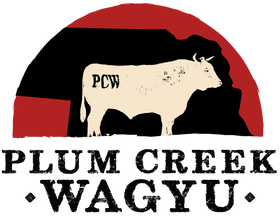The Wagyu Lifecycle: From Calf to Culinary Delight
Wagyu beef is revered for its unmatched tenderness, rich marbling, and deep flavor, but what makes it so special? The answer lies in the meticulous care and attention given to these cattle from birth to butcher. Let's take a closer look at the journey of a Wagyu calf and how its unique upbringing results in one of the most luxurious beef experiences in the world.
1. Selective Breeding: The Foundation of Excellence
The journey begins with careful breeding. Wagyu cattle are bred for their superior genetics, focusing on marbling potential, temperament, and overall health. Many ranchers use artificial insemination or controlled breeding programs to ensure the highest quality offspring. The bloodlines of Wagyu cattle are meticulously tracked, with Japanese Black being the most common breed used for premium beef production.
2. Early Life: The First Few Months
Newborn Wagyu calves receive exceptional care from the moment they arrive. They stay with their mothers for several months, nursing and building up essential nutrients. During this period, ranchers monitor their health closely, ensuring they grow at a steady, healthy pace. The stress-free environment provided at this stage is crucial to maintaining the high-quality meat Wagyu is known for.
3. Specialized Feeding Program
Unlike commercial cattle, Wagyu are fed a carefully curated diet to enhance marbling and tenderness. Their diet often includes a mix of high-quality grains, rice straw, and sometimes even beer or sake mash, which is believed to improve digestion and appetite. This feeding regimen, which can last anywhere from 24 to 36 months, allows Wagyu cattle to develop the signature fat marbling that makes their beef so buttery and flavorful.
4. Stress-Free Environment & Ethical Ranching
Wagyu cattle are raised in low-stress environments to ensure their meat remains tender. Many farms incorporate massages, classical music, and other calming techniques to keep the animals relaxed. A stress-free cow produces higher-quality beef, which is why Wagyu ranchers go to great lengths to provide optimal living conditions.
5. The Final Stage: Butchering & Aging
When Wagyu cattle reach their ideal weight, typically around 1,500 pounds, they are humanely processed. The beef is then graded based on marbling, color, and texture, with the highest grades receiving the coveted A5 rating. Many Wagyu cuts undergo a dry-aging or wet-aging process to enhance their flavor before being sold to high-end restaurants, specialty butchers, or directly to consumers.
The Result: A Culinary Masterpiece
From the careful selection of breeding stock to the meticulous feeding and handling, every step in the Wagyu lifecycle contributes to its superior quality. This attention to detail is what makes Wagyu beef unlike any other, delivering an indulgent, melt-in-your-mouth experience that food lovers around the world crave.
Final Thoughts
When you enjoy a perfectly cooked Wagyu steak, you're tasting the result of years of dedication and craftsmanship. The next time you savor that rich, buttery bite, you’ll appreciate the journey it took to get to your plate.
Related Posts
Wagyu Around the World: How Different Cultures Enjoy This Premium Beef
Wagyu beef, celebrated for its marbling and rich flavor, has transcended its Japanese origins to become a sought-after delicacy worldwide. Each culture has embraced this premium meat, creating unique dishes and preparation methods that highlight its exceptional qualities. In this blog post, we will explore how different cuisines around the globe enjoy Wagyu beef, from traditional Japanese preparations to contemporary culinary innovations.
The Perfect Wagyu Steak: Choosing the Right Cut for Your Taste
Wagyu beef is renowned for its exceptional flavor, tenderness, and unique marbling. However, with various cuts available, it can be overwhelming to choose the right one for your cooking style and preferences. This guide will help you navigate the world of Wagyu cuts, ensuring you select the perfect steak for your next culinary adventure.
Wagyu Cattle: A Day in the Life on the Ranch
At Plum Creek Wagyu, our cattle live a life of care, comfort, and premium nutrition, all of which contribute to the exceptional quality of Wagyu beef. Join us as we take you through a typical day on the ranch for our prized Wagyu cattle.
Flavor Like No Other: What Makes Wagyu Beef Stand Out
Comparing Wagyu Cattle Breeds: Japanese Black, Brown, and Polled
Wagyu beef is world-renowned for its rich marbling, tenderness, and deep flavor. However, not all Wagyu is created equal. There are several distinct breeds of Wagyu cattle, each contributing unique qualities to the beef they produce. In this post, we’ll explore the three primary Wagyu breeds—Japanese Black, Japanese Brown, and Japanese Polled—and explain how they influence the various types of Wagyu beef.
Wagyu Beef vs. Other Premium Cuts: What Sets It Apart
When it comes to high-end beef, food lovers are often faced with a variety of premium options, including Wagyu, Angus, and USDA Prime. While all are top-tier, Wagyu consistently stands out as a superior choice. In this post, we’ll break down what makes Wagyu beef truly exceptional compared to other premium cuts.








